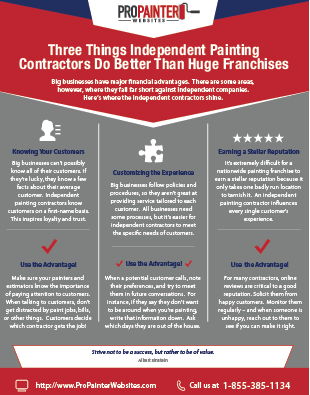Examine The Duty Of Seasonal Factors In The Success Of Business External Painting And Discover The Most Effective Times To Protect Lasting Results For Your Job
Examine The Duty Of Seasonal Factors In The Success Of Business External Painting And Discover The Most Effective Times To Protect Lasting Results For Your Job
Blog Article
Material By-Leach Bagger
When you're preparing a business external painting task, seasonal elements can make or damage your results. You'll intend to take into consideration just how temperature and moisture impact paint application and drying times. Choosing the right season can guarantee your paint adheres correctly and lasts much longer. However which seasons are really the most effective for this kind of job? Let's check out the crucial elements that can affect your task's success.
The Impact of Temperature on Paint Application
When you're planning a commercial outside paint job, the temperature can dramatically influence how well the paint sticks and dries out.
Preferably, you intend to repaint when temperature levels range between 50 ° F and 85 ° F. If it's as well chilly, the paint may not treat correctly, causing issues like peeling off or fracturing.
On the flip side, if it's also warm, the paint can dry out too quickly, protecting against correct bond and leading to an irregular coating.
You should likewise take into consideration the time of day; morning or late afternoon supplies cooler temperature levels, which can be much more positive.
Constantly inspect the supplier's suggestions for the details paint you're making use of, as they often supply guidance on the suitable temperature level array for optimum outcomes.
Moisture and Its Result on Drying Times
Temperature level isn't the only environmental factor that affects your commercial external painting task; moisture plays a considerable function also. High humidity levels can slow down drying times considerably, influencing the total quality of your paint work.
When the air is saturated with wetness, the paint takes longer to heal, which can bring about problems like inadequate bond and a higher risk of mildew development. If Suggested Internet page on a particularly moist day, be gotten ready for extensive delay times in between coats.
It's crucial to check local climate condition and strategy appropriately. Ideally, go for interior line painting phoenix between 40% and 70% for optimal drying.
Keeping these factors in mind ensures your project stays on track and provides a lasting finish.
Best Seasons for Commercial Outside Paint Projects
What's the very best season for your industrial outside painting jobs?
Springtime and early autumn are generally your best choices. Throughout these periods, temperatures are mild, and moisture levels are commonly reduced, producing perfect problems for paint application and drying.
Avoid summer season's intense heat, which can trigger paint to dry as well quickly, resulting in bad bond and finish. In a similar way, winter's cold temperature levels can hinder correct drying out and healing, taking the chance of the long life of your paint task.
Aim for days with temperature levels in between 50 ° F and 85 ° F for optimum results. Remember to examine the local weather report for rain, as damp conditions can spoil your task.
Planning around these variables ensures your paint task runs efficiently and lasts much longer.
Final thought
In conclusion, preparing your commercial exterior painting projects around seasonal factors to consider can make a significant distinction in the result. By organizing work during the suitable temperatures and humidity levels, you'll ensure far better adhesion and drying times. Remember to keep an eye on neighborhood weather prediction and pick the right time of year-- spring and early autumn are your best bets. Taking these actions will assist you achieve a durable and expert surface that lasts.
